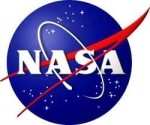Wed, Nov 10, 2010
Goal Is To Evaluate Potential New Systems, Concepts, And
Technologies
 NASA has selected 13 companies for negotiations leading to
potential contract awards to conduct systems analysis and trade
studies for evaluating heavy-lift launch vehicle system concepts,
propulsion technologies, and affordability.
NASA has selected 13 companies for negotiations leading to
potential contract awards to conduct systems analysis and trade
studies for evaluating heavy-lift launch vehicle system concepts,
propulsion technologies, and affordability.
The awards total approximately $7.5 million with a maximum
individual contract award of $625,000. Each company will provide a
final report to help lay the groundwork for the transportation
system that could launch humans to multiple destinations, including
asteroids, Lagrange points, the moon and Mars.
The selected companies are:
- Aerojet General Corp., Rancho Cordova, CA.
- Analytical Mechanics Associates, Huntsville, AL.
- Andrews Space, Tukwila, WA.
- Alliant Techsystems, Huntsville, AL.
- The Boeing Co., Huntsville, AL.
- Lockheed Martin Corp., Huntsville, AL.
- Northrop Grumman Systems Corp., Huntsville, AL.
- Orbital Sciences Corp., Chandler, AZ.
- Pratt & Whitney Rocketdyne, Canoga Park, CA.
- Science Applications International Corp., Huntsville, AL.
- Space Exploration Technologies Corp., Hawthorne, CA.
- United Launch Alliance, Centennial, CO.
- United Space Alliance, Huntsville, AL.
"These trade studies will provide a look at innovative launch
vehicle concepts, propulsion technologies, and processes that
should make human exploration missions more affordable," said Doug
Cooke, associate administrator of NASA's Exploration Systems
Mission Directorate at the agency's Headquarters in Washington. "If
we are to travel beyond low-Earth orbit, industry's collaboration
is essential to reduce the cost associated with our future
exploration goals and approaches and make the heavy-lift vehicle
affordable to build and fly."
The studies will include heritage systems from shuttle and Ares,
as well as alternative architectures and identify propulsion
technology gaps including main propulsion elements, propellant
tanks and rocket health management systems. The reports will
include assessments of various heavy-lift launch vehicle and
in-space vehicle that use different propulsion combinations. The
companies will examine how these combinations can be employed to
meet multiple mission objectives.
NASA will use the recommendations to evaluate heavy-lift launch
vehicle concepts and propulsion technologies for affordability that
will be required to enable robust and sustainable future
exploration missions.
More News
Aero Linx: Aviators Code Initiative (ACI) Innovative tools advancing aviation safety and offering a vision of excellence for aviators. The ACI materials are for use by aviation pra>[...]
Make Sure You NEVER Miss A New Story From Aero-News Network Do you ever feel like you never see posts from a certain person or page on Facebook or Instagram? Here’s how you c>[...]
From 2016 (YouTube Edition): Who You Gonna Call When You Have a Rocket Engine that Needs a Spacecraft? While at EAA AirVenture 2016, ANN CEO and Editor-In-Chief, Jim Campbell, sat >[...]
"In my opinion, if this isn't an excessive fine, I don't know what is... The odds are good that we're gonna be seeking review in the United States Supreme Court. So we gotta muster>[...]
Expedite Used by ATC when prompt compliance is required to avoid the development of an imminent situation. Expedite climb/descent normally indicates to a pilot that the approximate>[...]
 ANN's Daily Aero-Linx (04.30.25)
ANN's Daily Aero-Linx (04.30.25) ANN FAQ: Turn On Post Notifications
ANN FAQ: Turn On Post Notifications Classic Aero-TV: Agile Aeros Jeff Greason--Disruptive Aerospace Innovations
Classic Aero-TV: Agile Aeros Jeff Greason--Disruptive Aerospace Innovations Aero-News: Quote of the Day (04.30.25)
Aero-News: Quote of the Day (04.30.25) ANN's Daily Aero-Term (04.30.25): Expedite
ANN's Daily Aero-Term (04.30.25): Expedite



